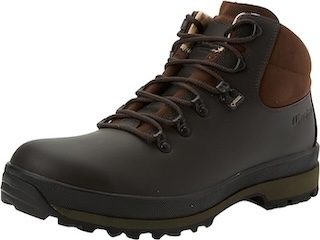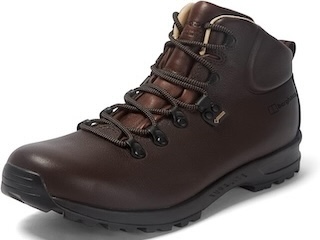Follow the Dales Way and Beyond on This Rewarding Dentdale Walk
Your Dentdale walk begins at Dent Head Viaduct, where you’ll find parking directly beneath the towering structure. The car park is small, but it rarely fills up, making it a convenient starting point for this scenic hike. From here, turn right and head downhill along the road. For the first two miles, you’ll walk north-west on this quiet road, which also forms part of the Dales Way National Trail. Despite being on the road, the peaceful surroundings and views of the River Dee will keep you engaged. You’ll also pass a few charming waterfalls, making this section more enjoyable than it might sound.
As you near Stonehouse, about halfway along the road, you’ll have the option to take a short detour. By turning right and following a track uphill, you can visit Arten Gill Viaduct, another impressive landmark on this Dentdale walk. If you choose to stay on the main route, continue along the road towards Cowgill. A little further along, at Cow Dub, you’ll pass a traditional Yorkshire Dales pub—a great spot for a brief rest and refreshment. From Cowgill, continue west on the Dales Way. Initially, this trail follows the road on the south side of the River Dee for about a quarter of a mile. Then, turn left off the road and continue along the Dales Way as it meanders through the countryside.

This next stretch of your Dentdale walk takes you west for just under 1½ miles, leading you through several farms. Upon reaching Laithbank, you’ll leave the Dales Way and follow a footpath that ascends the hillside in a south-westerly direction. After about half a mile, this path meets a wider stone track, which is part of the Dales High Way. Here, turn left and begin ascending the track. The climb is steady and continues for just over a mile before the path levels off near Boot of the Wold, a waypoint noted on the Ordnance Survey map.
After reaching Boot of the Wold, continue south-east along the Dales High Way, which is also called the Craven Way in this section. The route remains relatively level for about a mile before it begins to descend towards the aqueduct at Smithy Hill. Cross the aqueduct and continue along the track for a short while until you reach a point where you can make a U-turn, almost doubling back on yourself, to follow a new track heading north. This section of your Dentdale walk leads you through the picturesque Little Dale valley, where you’ll hike north for just over half a mile.

Eventually, you’ll reach a public footpath. Follow this path as it guides you uphill in a north-easterly direction, closely tracing the course of the Bleamoor Tunnel below. Along the way, you’ll pass some of the original ventilation shafts from the tunnel, adding an element of industrial history to your trek. This part of the Dentdale walk is about three-quarters of a mile long before the path starts to descend towards the northern entrance of Bleamoor Tunnel at Mossy Bottom.
From Mossy Bottom, continue north along the footpath. You’ll cross a footbridge and pass through Dent Head Farm before arriving at a minor road near Bridge End Cottage. Turn right here, and follow the road back uphill. This final section of your Dentdale walk will lead you back to the car park at Dent Head Viaduct, bringing your eleven-mile adventure through the stunning Dentdale landscape to a satisfying close.
Dentdale Walk: Maps and Tools
Visit either the OS Maps website or the Outdooractive website to view this walking route in greater detail. Both platforms offer a range of features, including the ability to print the route, download it to your device, and export the route as a GPX file. You can also watch a 3D fly-over and share the route on social media.
Dentdale Walk: Distance, Duration, Statistics
Distance: 11 miles
Distance: 17½ kilometres
Duration: 5½ hours
Ascent: 1945 feet
Ascent: 593 metres
Type: Circular walk

Recommended Ordnance Survey Map
The best map to use on this walk is the Ordnance Survey map of the Yorkshire Dales Southern & Western Area, reference OS Explorer OL2, scale 1:25,000. It clearly displays footpaths, rights of way, open access land and vegetation on the ground, making it ideal for walking, running and hiking. The map can be purchased from Amazon in either a standard, paper version or a weatherproof, laminated version, as shown below.
Standard Version
About Dentdale
Dentdale is a picturesque valley in the north-west of the Yorkshire Dales National Park, located in Cumbria. The dale follows the River Dee, but it takes its name from the village of Dent. The valley stretches from east to west, beginning at Dent Head.
The first settlers arrived in Dentdale during the 10th century when Norse invaders entered the area. The Romans were also familiar with the dale, but there is no evidence of any settlements from that period.
Traditionally, farming and worsted-related industries were the main occupations in the dale. Several mills took advantage of the fast-flowing waters of the River Dee to power their operations. By 1810, at least one mill had been converted to support the Dent Marble industry. In the 1840s, William Armstrong was fishing on the Dee when he saw a waterwheel powering a marble quarry. This inspired him to design a hydraulic engine, which helped him build his industrial empire.
Related Walk: Similar to the Dentdale Walk
Take in rewarding climbs and panoramic views on this Great Coum walk
Dent village serves as the main hub for shopping and social activities in the dale. Additionally, there are two hamlets at the top of the valley: Cowgill and Stone House. You’ll pass both hamlets on this Dentdale walk.
Dentdale is also rich in historic architecture. It has over 200 listed buildings and structures, including railway viaducts, bridges, barns, farmhouses, mileposts, and even telephone boxes. The only Grade I listed structure is the Church of St Andrew in Dent, a testament to the area’s heritage.
Dentdale Walk: My Photos
I begin my Dentdale walk at the Dent Head Viaduct, an impressive structure on the Settle to Carlisle Railway. Built between 1869 and 1875 by the Midland Railway Company, this Grade II listed viaduct stretches 182 metres, rises 30 metres high, and features 10 arches, each spanning 14 metres. Situated about 3½ miles north of the more famous Ribblehead Viaduct, it’s an inspiring starting point for the walk.

As I continue, I pass a ford on the River Dee near Stone House. This ford is essential for local farmers, providing access to their fields from the road.

Following the road through Dentdale, I walk past some old stone farm buildings near Stone House. Although this section of the Dentdale valley requires walking on the road, the light traffic makes it an enjoyable part of the journey.

Taking a brief detour from my Dentdale walk, I visit the Grade II listed Arten Gill Viaduct. This viaduct, also part of the Settle to Carlisle Railway, spans Artengill Beck with 11 arches. Built partly from Dent Marble, the viaduct is 200 metres long, 36 metres high, and its parapets sit at 340 metres above sea level. Groundwork began in 1870, and the viaduct was completed in 1875, located about a mile north of Dent Head Viaduct.

At Stone House Bridge, I cross over the River Dee to continue my Dentdale walk.

As I continue through the Dentdale valley, I pass this lovely arched bridge over the River Dee at Harbourgill. The picturesque setting, with the bridge arching gracefully over the water, adds charm to this part of the walk.

When I reach Cowgill, I take a short detour to visit St John the Evangelist, a Grade II listed church from 1869. The bench outside offers a perfect spot for a break, where I enjoy a cup of coffee and a snack.

From Cowgill to Laithbank, the Dales Way is well-marked with signposts and other helpful markers, making it fairly easy to navigate through Dentdale.

Continuing my Dentdale walk, I am treated to an excellent north-western view of the Dentdale valley from the path between Swarthwaite and Birk Pot. The expansive landscape here is truly captivating, with rolling hills stretching out into the distance.

On the same path, I enjoy another view, this time looking south-west across Deepdale towards Great Coum. The scene showcases the rugged beauty of the area, with its dramatic peaks and valleys.

As I follow the Dales High Way, I come across a view of Arten Gill Viaduct from Boot of the Wold, with Great Knoutberry Hill standing prominently in the distance.

Continuing along the Dales High Way, I take in more spectacular views. To the right, Whernside rises impressively, while Ingleborough is visible in the distance to the left, as seen from Craven Wold.

The view south-east from Craven Wold towards Pen-y-Ghent is equally stunning. As I begin my descent towards the aqueduct at Smithy Hill, the landscape continues to impress with its vast, open spaces.

Whernside looks magnificent from Rough Gill as I continue along the Dales High Way. The scenery here is simply breathtaking, with the mountain dominating the skyline.

The Dales High Way leads me down towards the aqueduct near Smithy Hill. This well-maintained path is crucial for the many walkers who take on the Yorkshire Three Peaks Challenge each year, ascending this hill from Ribblehead Viaduct on their way to Whernside.

I reach the aqueduct in Little Dale, where water from Force Gill flows over the Settle to Carlisle Railway. It’s a fascinating piece of engineering that adds to the historical interest of the walk.

Bleamoor Tunnel
The walking route across Blea Moor, between Smithy Hill and Mossy Bottom, directly follows the course of Bleamoor Tunnel. This tunnel, at 2404 metres long, is the longest on the Settle to Carlisle Railway, nearly double the length of the second-longest, Risehill Tunnel, located further north.


Constructed by the Midland Railway Company, work on Bleamoor Tunnel began in 1872 and took more than four years to complete. Dynamite, transported from Carlisle and Newcastle, was used to blast through the rock. To expedite construction, seven shafts were sunk, allowing workers access from above. Of these, three shafts remain for ventilation.

At its deepest point, the tunnel lies 150 metres below the surface. The project cost £109,000 at the time, equivalent to about £15 million today. Sixteen gangs of workers were employed, with miners earning between 5s and 5s 6d per day, roughly £25 in modern terms. The tunnel’s southern end features a steep 1 in 100 gradient, part of the ‘Long Drag’ that begins at Settle Junction, while the northern end descends at a gentler 1 in 440 gradient.

Over the years, Bleamoor Tunnel has played a crucial role in the line’s history, even serving as a testing ground for steam locomotives. Today, it remains a vital part of the Settle to Carlisle Railway, a testament to the engineering feats of the past. Walking over this tunnel, I’m reminded of the immense human effort that went into creating this line.

Continuing along my Dentdale walk, I find one of several helpful walking boards that guide me across the boggy ground near Mossy Bottom. These boards make traversing the wet terrain much easier.

As I pass near Hazel Bottom, just south of Dent Head Farm, I enjoy the tranquil surroundings, including a beautiful waterfall cascading nearby.

Finally, I cross a footbridge over a stream near Dent Head Farm. The countryside here is delightful, offering a perfect conclusion to my Dentdale walk.

Amazon’s Top Walking Boots: Four Standout Choices for Men and Women
For walking and hiking, the right boots are essential for both comfort and safety. While Amazon boasts a wide range, certain boots emerge as top-sellers. From those, here are four I personally favour. As an Amazon affiliate, I may earn a small commission from any purchases made through the links provided. This helps support the upkeep of this website. Rest assured, you won’t pay a penny extra, but your purchase will contribute to keeping my site running smoothly. Happy walking!

Berghaus Men’s Hillmaster II Gore-Tex Walking Boots
These fully waterproof leather walking boots feature a Gore-Tex lining, ensuring no water enters whilst allowing feet to breathe and stay cool. Made from full-grain leather, they promise unmatched durability and comfort. The boots come with memory foam tongues and cuffs that mould to your feet for a tailored fit, and the Vibram Hillmaster outsoles offer confidence on challenging terrains.

Salewa Men’s Mountain Trainer Mid Gore-Tex Walking Boots
Made from durable suede and abrasion-resistant textile, these men’s hiking boots are both lightweight and sturdy. The upper material is enhanced by a 360° full rubber sheath. Their dual-layer midsole with Bilight technology ensures ergonomic cushioning and grip, especially on extended hikes. The Vibram Wrapping Thread Combi outsoles allow a natural walking feel, and the Gore-Tex lining provides waterproofing, breathability, and optimal weather protection. Furthermore, the patented Salewa 3F system ensures flexibility, a secure heel grip, and a blister-free fit.

Berghaus Women’s Supalite II Gore-Tex Walking Boots
Specially designed for women, these hiking boots offer waterproofing and breathability, thanks to their Gore-Tex lining. Crafted from full-grain abrasion-resistant leather, they’re durable enough for the toughest hikes. The Supalite soles ensure stability and traction, and the EVA midsoles add comfort for extended walks.

Merrell Women’s Moab 3 Mid Gore-Tex Walking Boots
These hiking boots incorporate a Gore-Tex waterproof membrane, blending breathability with superior waterproof performance. The combination of pigskin leather and mesh on the uppers, along with the suede outer material, ensure durability and style. Enhancements include 100% recycled laces, webbing, and mesh lining. Additionally, bellows tongues, protective toe caps, and Vibram TC5+ rubber soles ensure protection and ease on any terrain.